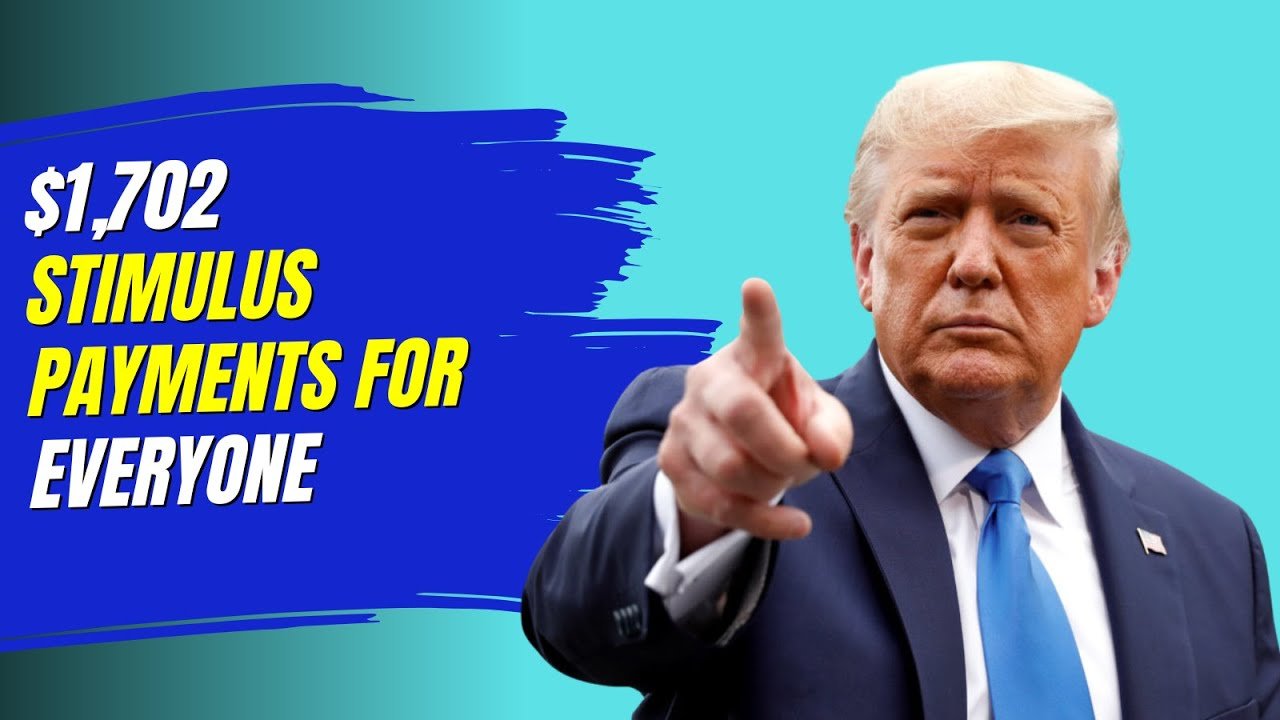Talk of $1702 Stimulus payments due in October 2025 has sparked excitement and relief across the United States. For millions of Americans still grappling with inflation, rising rents, and everyday financial hardship, this new round of federal payments is a breath of fresh air. With the official announcement of the October 2025 payment schedule, here’s everything you need to know—from who’s eligible to when you can expect the money.
$2,000 Direct Deposit From IRS in October? What You Need to Know
Background: Stimulus When Needed Most
Since 2020, federal stimulus and relief programs have played a vital role in assisting families and seniors during difficult economic times. Although pandemic-era checks have long since expired, the government has periodically launched smaller relief initiatives to mitigate the impact of inflation.
This $1,702 amount, confirmed by multiple official updates and state-level coordination notices, is part of the ongoing Federal Relief Assistance Program (FRSP) to help low- and moderate-income families. This is not a new law, but an expansion of existing tax credit distributions and cost-of-living adjustments for eligible citizens.
According to reports, the Internal Revenue Service (IRS) and the Social Security Administration (SSA) have collaborated to ensure that payments are issued efficiently—primarily through direct deposit to eligible recipients.
Who Qualifies for the $1,702 Stimulus Payment?
The eligibility criteria are fairly broad, aiming to assist those most affected by rising living expenses. Here’s a breakdown of who may receive the payment this month:
-
Low- and Middle-Income Earners:
Individuals earning under $75,000 per year and married couples earning under $150,000 jointly may qualify for the full amount. -
Social Security Recipients:
Those receiving benefits under Social Security, SSDI, or SSI are automatically included. Payments will be sent directly to the same bank accounts used for monthly benefits. -
Veterans and Retirees:
Eligible veterans receiving federal or disability benefits are also included in the payment schedule. -
Tax Filers:
Anyone who filed taxes for the 2023–2024 period and met income limits could be eligible. Non-filers may need to complete an updated eligibility form through the IRS portal if they haven’t received benefits before.
This program is intended to ease the burden of daily expenses for those already struggling to keep up with inflation — ensuring that individuals and families can afford essentials like food, medicine, and utilities.
October 2025 Payment Schedule
The IRS has confirmed that payments will follow a staggered schedule throughout October to ensure smooth processing and avoid system overload. The plan is as follows:
- October 9, 2025: First wave of direct deposits for Social Security and Small Business (SSI) beneficiaries.
- October 16, 2025: Payments for SSDI recipients and veterans.
- October 23, 2025: Taxpayers and low-income families who registered through the IRS Non-Filer tool.
- October 30, 2025: Final phase, which will include those with pending verification or banking delays.
If applicable, paper checks may take up to two additional weeks to arrive by mail. Direct deposit remains the fastest and most secure option.
How the $1,702 Payment Amount Was Calculated
Unlike previous stimulus payments, the $1,702 figure is not arbitrary. It reflects a combination of cost-of-living adjustments (COLA) and federal rebate credits linked to inflation and tax relief.
Economists estimate that inflation has increased household costs by more than 3.8% through 2024. This payment is intended to help offset this increase, ensuring that citizens can maintain basic financial stability while the economy adjusts.
The exact amount may vary slightly based on individual income, dependents, or previous tax filings, but most eligible adults will receive approximately $1,702.
How to Check Your Payment Status
You can easily track your payment status using the official IRS “Get My Payment” portal. This online tool lets you see whether your payment has been processed, what the deposit date is, or whether additional verification is required.
For Social Security recipients, you can log in to your My Social Security account or contact your local office for updates. Avoid unauthorized websites – scammers often use fake links promising “quick access” to trick people into sharing personal information.
Beware of scams and false claims
Whenever financial assistance is announced, scammers immediately try to take advantage. Remember:
- The IRS will never call, text, or email you asking for banking information.
- Payments are automatic—you don’t need to apply or pay any fees to receive them.
- Always check www.irs.gov or www.ssa.gov for updates.
If you receive a suspicious message, immediately report it to the IRS Fraud Division or FTC.gov.
Why this Payment is important
For millions of Americans, $1,702 may not solve every problem—but it provides real relief. Whether it’s paying outstanding bills, paying rent, or simply putting food on the table, this payment comes at a time when families truly need it.
It also signals that policymakers understand the current financial pressure. By supporting seniors, veterans, and working-class families, the government hopes to bolster consumer confidence in the final quarter of the year.
Final Thoughts
The $1,702 stimulus payment is a welcome step for countless Americans trying to rebuild their financial footing in 2025. While this isn’t a traditional “stimulus check,” it’s a meaningful step toward helping citizens cope with inflation and rising costs.
If you’re eligible, expect your payment according to the schedule described above—and remember, the safest way to get information is through official government sources.
For now, this October brings a bit of hope—a reminder that even small relief efforts can make a big difference in difficult times.

